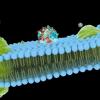Antioxidants are oxidized by radicals and thus wear out.
Turnbuckle - this is one of the interesting things about fullerene as an antioxidant.
http://www.ncbi.nlm....les/PMC2676811/See the section under 'anti-oxidant activity'
It does not apparently wear out as such. When acting as an oxidiser ( not as an anti-oxidant) as its action is catalytic. The fullerene "can react with many superoxides without being consumed".
However, it does appear to act as a chemical reagent when acting as an anti-oxidant. It would not 'wear out' as such but all its unpaired electrons would be paired to radicals.
The question, is, does it undergo further reactions, that end up with it being stripped back to its fullerene core, and so undergo new cycles?
In addition,
this interesting paper may have been mentioned previously - I certainly read it. It gives a very useful overview, and the first paragraph, warning strongly that pristine fullerene and fullerene adducts are not the same molecules, should be read and taken note of by all of us.
Of course, if fullerene adducts are stripped back to pristine fullerene in vivo, it remains a moot point.
Thirdly, I would like to see a discussion on the organism level effects of bioaccumulation of fullerene in the liver? This appears to be where it primarily bio-accumulates.
Edited by Metrodorus, 16 June 2012 - 12:28 PM.

















































